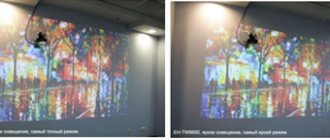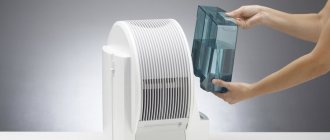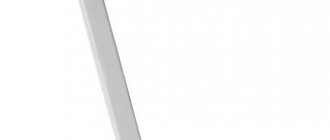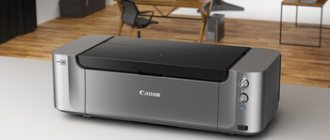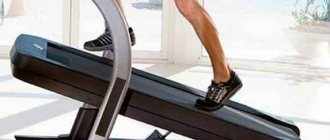Until recently, projectors were used in offices and educational institutions to display slides with graphs and presentations, which was more like watching filmstrips. Now video projectors cope with more non-trivial tasks - watching movies, playing computer games - but do not lose their relevance for work and study. We suggest you figure out which projector is intended for what purposes.
Short review
Video projectors have several classes:
- Pocket, weighing no more than 300 grams. These projectors are multimedia, but with extremely limited functionality;
- Ultraportable. Compact and lightweight. Suitable for work purposes, low quality functionality;
- Portable. Can be used as portable or stationary equipment. Compact but high resolution;
- Stationary. They are low mobile, have high performance, and can often connect several signal sources.
More and more people are choosing stationary video projectors, replacing them with TVs, which also have their advantages. Comparing pocket projectors with TVs, of course, is unreasonable, but if you take into account the average indicators, then an approximate comparative table of advantages and disadvantages looks like this:
| TV | Projector |
| pros | |
| bright | large image size |
| silent | compact, mobile |
| independent of lighting | you can change the image format |
| high contrast | not harmful to eyes |
| Minuses | |
| image format does not change | darkening of the room is required |
| eyes get tired when watching | lamps need replacing |
| expensive models with a large diagonal | requires separate audio equipment |
| noisy | |
The best projectors of 2019-2020
In our 2019-2020 School Year School Projector Report, we look at 20 new projectors released last year. They cover a wide range of what's available, from very inexpensive ones to those that have advanced networking solutions and powerful projectors capable of handling large university classrooms. Most of them have families of similar projectors, differing only in resolution or perhaps brightness. Our largest spec spreadsheet shows not only the educational projectors we've reviewed, but also each of their siblings, so you can find information about the projector version that best suits your needs.
Projectors continue to improve, but many technologies are still in their infancy. As a result, projector manufacturers no longer replace most models every year. Many stay on the market for two or three years. Those that have been on sale for more than one year will typically have price reductions for the 2nd or 3rd year to keep them competitive.
For this reason: Those projectors from previous years' education reports that received awards and that still meet our requirements for the remaining current models, at least until fall 2021, have been included in this year's report. We started doing this a couple of years ago.
Some of the projectors we reviewed last year should certainly be considered great choices today, and some of our winners last year are considered some of the best-selling projectors, especially in schools. Previous winners that are still relevant are presented in this report along with new ones. You have to consider them excellent projectors, fully comparable to this year's winners and equally worthy of consideration this year. Those who won an award last year are not eligible for a new award this year.
Our goal is to discuss a wide range of options to help decision makers understand their options and make the right choice. Decision makers include IT and AV managers, technical coordinators, teachers/professors, and people from the business side. There are probably about 500 projectors available for business and education in Russia at present. Seems like a lot, but consider that Epson alone has over 75 educational and business projectors listed on their website (they have over 50% of the projector market share), and that's about 7 times the next largest seller. Some of the biggest companies are also vying for market share, including Sony, NEC, Optoma, BenQ, Casio, ViewSonic, LG, Panasonic, Canon, etc.
Rather than categorizing hundreds of projectors and recommending many dozens, we're trying to help you understand what projectors that meet your needs might look like. Our winners reflect the brightest - for a variety of reasons. Some will be ideal for your needs. others may be generally as good or better, but they will not meet your organization's specific requirements.
The 2019-2020 Best Projectors for Schools and Education report covers 20 different projectors. It is important to remember that many of the projectors are part of a larger family of projectors with minor modifications. As a result, these 20 represent many projector series, with many of these projectors having 4-8 "siblings" differing only in resolution and perhaps brightness or networking capabilities. The exception is UST and interactive projectors, where many have one to three linked projectors.
For example, we may have reviewed and reviewed a particular WUXGA projector in this report, but this manufacturer also offers XGA and WXGA versions, as well as a couple in the series that are brighter and cost more, but are otherwise nearly identical. When it comes to these cheaper projectors, there may be slightly different versions - with and without network connections.
Our largest spec sheet will show not only the 17 projectors, but all the specs of their siblings.
Ultra-short throw projectors still differ from others in that they usually have a very small range of models. Sometimes it may only be one line. Or, as in some cases, a manufacturer may have just one UST (ultrashort throw projector) and another similar one with added interactivity for a series of two.
Often, schools will find a projector with the right set of features and then select a model with their preferred resolution, network connection level, brightness, etc.
Note that these days, almost any projector with MHL support or wireless capabilities to work with tablets and phones has at least minimal interactivity. So when I talk about serious interactivity, I'm talking about knobs, maybe finger controls, etc., not just app control.
In general, the advantages of interactive projectors, which are usually ultra- or very short-throw projectors in schools, are that they can be mounted on the wall above the screen rather than on the ceiling. They are also located so close to the screen that the intense light from the projector does not reach the speaker's eyes, so they are better positioned to avoid blinding the teacher or student standing at the screen.
This usually results in a less expensive and easier installation than more traditional standard and short throw projectors. Another advantage is that it does not cast too much shadow on the projection surface.
Again, this year we'll look at the pros and cons of lamps versus LED, laser, and hybrid projectors.
All projectors described here are available at the time of publication according to their manufacturers, and none are expected to be discontinued before September 30, 2021. All of them must be available for purchase by schools in the quantities needed for the upcoming school year.
This year's report includes a large number (11) of high brightness projectors suitable for these large university auditoriums (as well as school auditoriums and multi-purpose rooms).
There are eight traditional small stationary/portable projectors that work well in small classrooms.
Three of these projectors are listed in both the school and higher education sections - because they are ideal for schools and are also capable of working in higher and secondary education classrooms and laboratories.
This year we also have a new category for the first time: projectors for higher and special higher education. It's packed with extremely powerful projectors that are particularly suitable for spaces such as museums and for digital advertising in universities and colleges.
In this group you will find five projectors, including the least bright - a dedicated projector from Epson with only 2000 lumens and a monster laser projector with 15000 lumens, the Epson L1755UNL!
Main characteristics
Matrix type
- LCD. Mainly three LCD matrices are used. The image is stable, realistic, rich, but the contrast is low and there may be a “chicken-mesh” feel.
- DLP. Projectors are reliable and durable. The matrix consists of rotating micromirrors. The contrast of the picture is high, deep shadows and blacks. The downside is that the image may flicker.
- LCoS. A silicon LCD matrix with a mirror surface underneath. High definition image, contrast, high-quality color rendition. Equipment of this type is expensive, mainly produced using two technologies: SXRD (Sony company) and D-ILA (JVC company).
- CRT. The image is high quality, deep black color, low luminous flux. The devices are durable, but heavy, expensive and difficult to install.
- Laser Scan. Used in small portable projectors. The image remains in focus, regardless of the distance to the projected surface or its unevenness.
Permission
The detail and quality of the picture depends on the resolution; the higher it is, the better the image. The resolution of the video projector must match the resolution of the device from which the broadcast is intended.
On average, a resolution of 1024x768 is sufficient for working with presentations, 1280x720 for HDTV movies, and 1920x1080 for watching videos in Full HD quality.
Brightness
The aperture number of the video projector is responsible for the brightness of playback. The lower it is, the brighter the image on the screen.
Contrast
With high contrast, shades and midtones are better conveyed, and dark images and videos are reproduced well.
Luminous flux power
The luminous flux power depends on the quality and quantity of lamps; in a single-lamp projector it ranges from 1000 to 3000 lumens. The worse the room is darkened, the more lumens will be required.
Focal and throw distance
The shorter the focal length, the wider the viewing angle.
The projection distance from the lens to the screen is the distance at which the image remains bright. But this parameter is strongly influenced by external lighting conditions, so this characteristic is conditional.
Noise level
Comfortable noise level for a video projector is 25-45 dB.
Weight
The weight of the device depends on its class. For example, portable projectors weigh from 2 to 4 kg, and stationary ones weigh more than 4 kg.
Select resolution
Nowadays, the most affordable and therefore in demand are projectors with a resolution of 1280x800 pixels (WXGA) and a screen aspect ratio of 16:10. More expensive projectors have a resolution of 1920x1200 pixels (WUXGA), on them images, text and small details look much better and clearer.
High resolution can make all the difference when choosing a projector for quality education, effective design and medical research, so that no detail in the image disappears from view. In this case, you must, of course, take into account what resolution your device from which you are sending the signal to the video projector has.
Features of projectors for school
Projectors for educational institutions and offices are usually designed to work with static images and presentations. The main characteristic is the power of the luminous flux. Since classrooms are poorly dimmed, you will need a projector with at least 2,000 lumens. The projector format must be suitable for computer resolution with a 4:3 ratio. Among the specific features: support for interactive modes - a pointer, gestures, finger touches are used, as when working with a touch screen.
Check out the interactive features
These days, projectors are more than just devices that project images onto a screen. Leading projectors on the market have smart, interactive capabilities that let you write text, plot graphics, and draw on the projected image. The mouse function also allows you to control your computer directly from the screen. This means that you can work with educational materials and software that are on your computer, as well as use various tools. This opens up exciting opportunities for teaching and learning.
Interactive projection boards are gradually being replaced by ultra-short throw interactive projectors, which require much less installation space. Unlike interactive whiteboards, a sensor located directly on the projector allows you to instantly create an interactive surface in any unprepared room.
Please note that to use the interactive functions of the projector, an ordinary soft screen canvas will not be suitable as a screen, and you will need a hard, fairly even and smooth white surface, this can be either a wall or a white marker board, preferably with a special projection surface that will rid the image of a bright light spot in the center.
Pick up a board
Rating of the best projector manufacturers
Each brand in our rating has a large selection of high-quality video projectors. Choose a model that meets your individual requirements, we will consider the best models according to customers.
BenQ
- Price
- from 19,148 rubles. - Type
- DLP - Country of origin
: China
BenQ produces ultraportable, portable and stationary devices. The cost of some large-format stationary models exceeds 1.5 million rubles. The BenQ W1720 with a price of about 80,000 rubles is popular; let’s look at its pros and cons.
benq projectors
| pros | Minuses |
| high quality image | no built-in media player |
| good color rendition | low brightness |
| HDR emulation | a little noisy |
| not heavy | gray pixel frame |
| good quality built-in sound | |
| easy to install | |
| color calibration passport | |
| 4K HDR |
Acer
- Price
- from 16,180 rubles. - Type
- DLP - Country of origin
: China
The Taiwanese company Acer is known for its computer equipment and electronics; it produces video projectors for offices and home theaters costing up to 700 thousand rubles. Among the models there are all classes of devices - from pocket to stationary, the best of which, according to buyers, is the portable widescreen Acer X138WH.
acer projectors
| pros | Minuses |
| screen diagonal up to 300“ | Dead pixels appear over time |
| high brightness | Lamp warranty - 1 year |
| easy to use | a bit noisy |
| 2 year warranty | |
| 3D support |
Epson
- Price
- from 22,840 rubles. - Type
- LCD - Country of origin
: Philippines
The Japanese company of the diversified concern Seiko Group produces all classes of projectors, except interactive ones, as well as pocket ones. The most expensive device is the Epson EB-L1710S, its cost reaches 1.5 million rubles, while buyers recommend the Epson EH-TW5400 model, the average price of which is 50,000 rubles.
epson projectors
| pros | Minuses |
| saturated color | high noise level |
| clear and deep picture | low contrast |
| 3LCD technology | weak native speaker |
| high color rendering | |
| eco mode | |
| convenient control |
Ricon
- Price
- from 20,779 rubles. - Type
- DLP, LCD - Country of origin
: China
A brand from Japan, founded in 1936, produces media projectors for offices and concert halls. The inexpensive Ricon PJ X2440 with a luminous flux of 3000 lumens is popular.
ricon projectors
| pros | Minuses |
| inexpensive | heats up quickly, cools down for a long time |
| compact | |
| built-in speakers d | |
| auto shutdown timer | |
| good image quality even in a bright room | |
| easy focusing |
Xiaomi
- Price
- from 49,900 rubles. - Type
- DLP - Country of origin
: China
Xiaomi multimedia devices are presented in all classes except pocket ones. The most popular stationary wide-format model is Xiaomi Mijia Laser Projection MJJ GYY02FM with an average cost of about 90,000 rubles, the luminous flux of which is 5000 lm.
xiaomi projectors
| pros | Minuses |
| high quality plastic | there are versions without Russification |
| bright contrast image | noisy |
| remote control | |
| good sound | |
| design |
Ledunix
- Price
- from 3,970 rub. - Type
- LCD, 3LCD, DLP - Country of origin
: South Korea, China
The Russian company Ledunix is engaged in the production/sales of LED video projectors and their components. Product prices are inexpensive; menu, instructions in Russian. The manufacturer claims a service life of up to 50,000 hours. Ledunix LED-PRO 60 is the brand’s most popular model.
ledunix projectors
| pros | Minuses |
| inexpensive | Full blackout required |
| high quality clear image | |
| low noise level | |
| remote control | |
| doesn't overheat |
Sony
- Price
- from 26,120 rubles. - Type
– DLP, LCD, SXRD - Country of origin
: Japan, China
The range of Sony brand video projectors includes all types and classes of devices, except interactive ones. The price for the most expensive model reaches two million rubles. The most in demand is the Sony VPL-HW45ES - a stationary wide-format projector with Full HD resolution, a light flux of 1800 lm, and an average cost of 130 thousand rubles.
sony projectors
| pros | Minuses |
| low noise level | no trapezoid adjustment |
| color rendering | long focal length |
| contrast | dark room required |
| image smoothing | large-sized |
LG
- Price
- from 30,488 rubles. - Type
- DLP - Country of origin
: China
LG presents portable, ultraportable, stationary video projectors for offices and home theaters with Full HD resolution, the cost of which does not exceed 200 thousand rubles. The LG PF1500G projector is loved by users for its picture quality and is the most popular model with a price of about 60 thousand rubles.
lg projectors
| pros | Minuses |
| low noise level | insufficient brightness in economy mode |
| good sound | weak optics |
| compact | The built-in player does not play all codecs and subtitles |
| good image quality | |
| long lamp life |
Toshiba
- Price
- from 18,490 rubles. - Type
- DLP - Country of origin
: China
At the moment, Toshiba markets only portable, stationary office video projectors with a luminous flux of 2000 lm. Maximum resolution 1024x768. The TDP-S35 model is the most common among Toshiba media projectors.
toshiba projectors
| pros | Minuses |
| easy | gets very hot |
| mobile | manual setting |
| works smoothly | freezes after years of use |
| many input connectors | |
| speaker |
Ensure ease of maintenance and determine cost of ownership
Be sure to pay attention to the service life of the light source. The cost of the light source can be an unpleasant surprise, and frequent replacement will undoubtedly increase the cost of projector ownership. In cheaper projectors, the lamp life usually does not exceed 4,000 hours, while in more advanced projector models from leading manufacturers, this life reaches 10,000 hours, and in laser projectors, the light source life reaches 20,000 hours or more, which The standard use of the projector is about 10 years, reducing the cost of projector ownership several times.
Having a limited budget in modern Russian realities, schools must take into account not only the purchase price, but also the costs that are associated with the life cycle of the projector.
Dust is the main enemy of an LCD projector, and how well the internal components of the projector are protected from dust directly determines their service life. The presence of a filter in the projector and a sealed housing will protect the lamp and expensive LCD matrix of the projector from dust and significantly extend their service life, ensuring the preservation of the original image quality for many years.
Easy access to the lamp and filter and long service intervals also reduce overall maintenance costs and save staff time.
Many manufacturers, in pursuit of savings, install plastic lenses in the optical unit, which, as a result of prolonged operation and heating, can change their shape and even melt, as a result the image degrades, becomes cloudy and blurry.
At first glance, a cheaper projector may seem like a good deal, although in fact, the cost of owning a projector with a more durable light source, an antistatic filter and a sealed optical unit will be significantly lower in the long run, due to a significant reduction in the cost of its maintenance and service.
